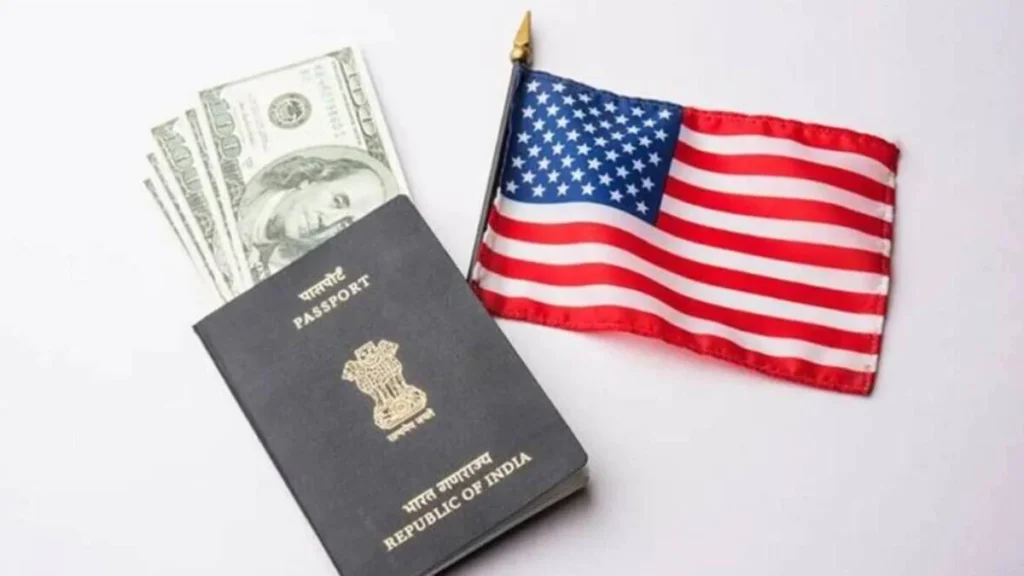Last week, the White House helped the US Congress adopt a bill that would do away with the per-country cap on green card issuance. The law, if implemented, will enable US firms to prioritise hiring individuals based on “talent” rather than “birthplace,” which is expected to benefit Indian-Americans. The EAGLE Act of 2022, or (Equal Access to Green Card for Legal Employment), will shortly be put to a vote in the House of Representatives.

An immigrant who receives a green card, also known as a permanent resident card, is able to live and work permanently in the United States. The card is used to show that the holder has been granted the right to live permanently.
Having a green card has a number of advantages, including a path to citizenship, the ability to sponsor members of one’s immediate family for the same card, easy access to the social security system and educational assistance, the freedom to live anywhere in the US, greater career flexibility due to the ability to apply for a variety of jobs, and the ability to sponsor family members for the same card.
By removing the “per country” restriction on employment-based immigrant visas (green cards), the Act aims to enable US firms to “concentrate on employing immigrants based on merit, not their birthplace.” The proposal intends to phase away the per-country caps over a nine-year period in order to lessen the impact on less populous nations and ensure that eligible immigrants from these nations are not disqualified when the Act is put into effect.
In order to meet the demand for nurses and physical therapists in the healthcare industry, as well as “for employment-based immigrants and their family members who are not currently in the United States,” some visas will be set aside for these individuals during the transition period, according to a statement released by the Executive Office of the President.
The enhancement of the H-1B speciality occupation visa programme is a secondary objective of the EAGLE Act 2022. The recruitment requirements would be tightened, US worker rights would be strengthened, and openness would be increased, among other things.
“H.R. 3648 also contains crucial provisions that will enable people who have been waiting in line for immigrant visas for two years to apply for green cards. “Employment-based immigrants would be able to transition off of their temporary visas and give them extra flexibility in changing employers or starting a business, even if the applications wouldn’t be granted until a visa became available,” the statement adds.
The enhancement of the H-1B speciality occupation visa programme is a secondary objective of the EAGLE Act 2022. The recruitment requirements would be tightened, US worker rights would be strengthened, and openness would be increased, among other things.
“H.R. 3648 also contains crucial provisions that will enable people who have been waiting in line for immigrant visas for two years to apply for green cards. “Employment-based immigrants would be able to transition off of their temporary visas and give them extra flexibility in changing employers or starting a business, even if the applications wouldn’t be granted until a visa became available,” the statement adds.
Due to the per-country cap and the 140,000 employment-based green cards available, the backlog has reached millions. In its 2022 analysis, the CATO institute notes that nearly all of the backlogged immigrants are from India.
In the United States, skilled Indian employees made up 75% of the employment-based backlog, according to the CATO analysis from 2020. Notably, the backed-up Indian labourers risked a nine-decade wait before they could receive a green card assuming they all managed to stay in line.
More than “200,000 petitions filed for Indians could expire as a result of the workers passing away from old age before they acquire green cards,” according to the 2020 report.
Indians have to wait significantly longer than other nationalities, in part because companies submit many more petitions for Indians than is permitted by the law, which places restrictions on the number of green cards that can be issued to immigrants from any one birthplace.
However, given the existing circumstances, even removing the per-country cap would still result in wait times of more than ten years for every immigrant sponsored by their company. The per-country restrictions therefore disfavour Indians, as more recent immigrants must wait a lifetime for green cards.











